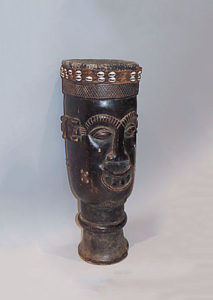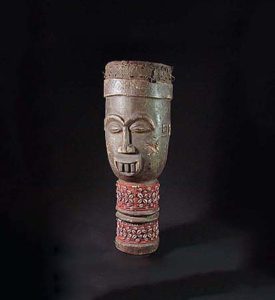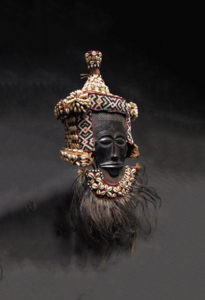Lele
The Lele (or Leele), also known as Bashilele or Usilele, are a Bantu ethnic group closely related to the Kuba people in the Democratic Republic of the Congo and occupy the western region of the Kuba kingdom. The head of the Lele people is the nymi, a king with limited powers. The village is organized according to age groups, with the oldest man as chief. The elders are still the depositories of healers, who used to be organized into the banging society and subject to initiation. This society included mature men as well as the parents of twins, who were considered to be mediators between the spirits and humans.
The art of the Lele is not well known. It is similar to Kuba styles with the exception of its masks, which generally have a flattened shape. The most important forms of Lele art are carved drums, divination instruments, boxes, pipes, and palm wine cups. Lele carvers also produce statuettes and face masks. The masks often have slit eyes. The functions of the masks are little known, while they appeared in dances accompanying the burial rites of chiefs and in annual foundation/creation ceremonies. Although the art of the Lele borrows many elements from the Kuba and Dengese in particular, the hairdo and long braids of the statuettes distinguish them from any others. The Lele also use different prestige objects. The figures on these objects occasionally have a coiffure with two long plaits down the back.
Source: index.html (zyama.com)



